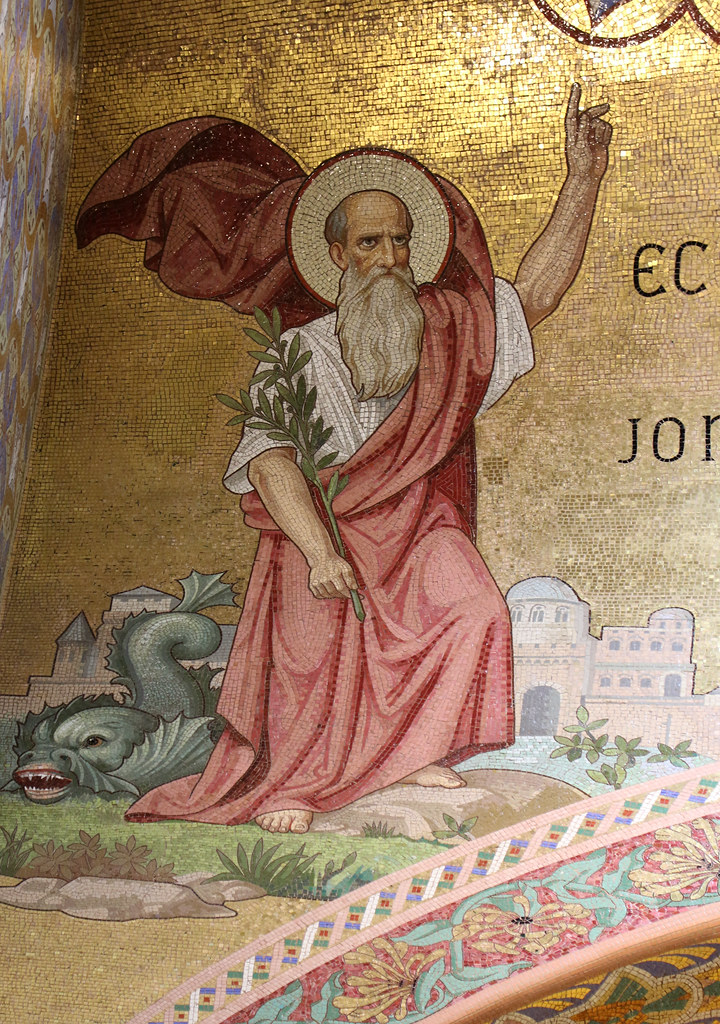An exploration of the symbolism, redemption, and spiritual lessons found in Jeremiah 13, highlighting its connection to Jesus and the consequences faced by Judah.

Photo by Adedotun Adegborioye on Unsplash | Commercial use allowed
Overview of Jeremiah 13
Jeremiah 13 is a profound chapter in the Bible that is rich in symbolism and carries significant messages about the spiritual condition of the people of Judah and Jerusalem. The symbolism behind the loincloth, as described in Jeremiah 13, serves as a poignant representation of the people’s worthlessness in God’s eyes. The deterioration of the loincloth mirrors the corruption and moral decay that had taken root among the people, emphasizing their departure from God’s intended purpose for them. This symbolism provides a vivid picture of the moral degradation and spiritual decay that had enveloped the people, serving as a powerful warning about the consequences of straying from God’s path.
Furthermore, Jeremiah 13 condemns Judah and Jerusalem for their pride and disobedience, forewarning them of the dire consequences that await as a result of their actions. It is a sobering reminder of the perils of straying from God’s will and the ultimate accountability that follows. The chapter serves as a poignant reflection on the consequences of pride and disobedience, drawing attention to the timeless truth of divine judgment and the necessity of aligning with God’s will.
#Jeremiah13, #Jesus, #Symbolism, #Redemption, #SpiritualLessons, #BiblicalAllegory, #OldTestament, #NewTestament, #Christianity, #Faith, #Prophecy, #BiblicalInterpretation, #ProphetJeremiah, #Messiah, #Parables, #Forgiveness, #SpiritualGrowth, #BiblicalReflections, #Theology, #FaithAndBelief
An illustrative example of the consequences of disobedience and pride can be found in the historical context of Judah and Jerusalem. Despite receiving numerous warnings and messages of repentance through prophets such as Jeremiah, the people continued to defy God’s commandments and indulge in idolatry. This historical backdrop serves as a poignant illustration of the themes of pride and disobedience, emphasizing the enduring relevance of Jeremiah’s message in today’s context.
Symbolism in Jeremiah 13
The symbolism in Jeremiah 13 is rich with spiritual significance and serves as a powerful metaphor for the moral decay and impending consequences faced by the people of Judah. The use of the loincloth in Jeremiah 13 serves as a poignant symbol of the people of Judah, who were initially intended to cling to God but, due to their moral corruption and disobedience, became worthless and degraded. This symbolism reflects the people’s departure from their intended relationship with God, highlighting the consequences of their actions and the impending judgment they face.
Moreover, the symbolism of the wine in Jeremiah 13 serves as a striking portrayal of the people’s pride and rebellion. Just as the wine represents intoxication and a departure from sobriety, the people’s pride and rebellion have led them away from God, resulting in spiritual degradation and impending consequences. This symbolism underscores the warning of the repercussions of their actions and emphasizes the importance of humility and obedience in their relationship with God.
A notable example of the symbolism in Jeremiah 13 can be found in the allegorical representation of the loincloth. The transformation of the once-valuable garment into a ruined and worthless state serves as a vivid portrayal of the people’s moral decay and spiritual deterioration. This powerful metaphor effectively conveys the consequences of straying from God’s intended purpose, emphasizing the profound impact of disobedience and moral corruption.
 Conveying Redemption in Jeremiah 13
Conveying Redemption in Jeremiah 13
Jeremiah 13 conveys the theme of redemption through the juxtaposition of the people’s impending consequences and the potential for spiritual renewal. Despite the condemnation and impending downfall faced by Judah and Jerusalem, the passage offers a message of hope and renewal through God’s grace. This redemption is exemplified in the possibility of a transformative change in the people’s lives, emphasizing the mercy and compassion of God towards those who turn back to Him. The enduring message of redemption in Jeremiah 13 serves as a beacon of hope, reminding readers of the unfailing nature of God’s grace and the boundless opportunities for spiritual rebirth.
An illustrative example of this theme of redemption can be found in the symbolism of the loincloth. The loincloth, which was once meant to cling to God, becomes ruined and worthless due to the corruption of the people of Judah. However, the very act of God sending Jeremiah to the people with this message of warning and impending consequences reflects His desire for their redemption. It signifies that even in their state of deterioration, God offers the opportunity for spiritual restoration and renewal, underscoring His unwavering love and willingness to reconcile with His people. This example serves as a powerful testament to the redemptive nature of God’s grace, offering hope in the midst of impending judgment.
Furthermore, the passage conveys the potential for redemption through the spiritual lessons derived from the loincloth and the wine. It serves as a poignant reminder that despite the consequences of pride and rebellion, there is always the possibility of redemption through humility, repentance, and a return to faithfulness to God. This demonstrates God’s enduring desire for the restoration of His people, providing a message of hope and renewal amidst the impending judgment. The enduring nature of this redemptive message is a testament to the unchanging character of God’s grace and His unwavering commitment to the restoration of His people.
Deriving Spiritual Lessons from Jeremiah 13
Jeremiah 13 is a rich source of spiritual lessons that resonate with believers today. One of the key lessons derived from this passage is the danger of pride and rebellion. The symbolism of the loincloth and the wine serves as a poignant reminder of the consequences of turning away from God’s will. The people of Judah, represented by the loincloth, were meant to cling to God but became corrupt, reflecting the potential for moral decay and spiritual deterioration when one strays from God’s path. This cautionary tale serves as a timeless reminder of the perils of spiritual complacency and the necessity of remaining steadfast in faith.
Additionally, the passage highlights the significance of remaining faithful to God and relying on His grace during times of struggle. The suffering in the pit, as mentioned in Jeremiah 13:1-14, is a spiritual struggle that is associated with faith in Jesus Christ. This suffering underscores the challenges faced by those who proclaim God’s word and the temptation to despair and struggle with faith. However, the passage encourages believers to keep looking up to God’s promises and depend on His grace, mirroring the message of hope and perseverance found in the teachings of Jesus. This emphasis on the enduring nature of faith and reliance on God’s grace serves as a poignant reminder of the unwavering source of strength and hope in the midst of life’s trials.
An additional spiritual lesson that can be derived from Jeremiah 13 is the enduring nature of God’s mercy and grace. Despite the impending consequences and judgment faced by the people of Judah, the passage offers a message of hope and renewal through the redemptive power of God’s grace. This serves as a timeless reminder of the boundless nature of God’s love and the enduring opportunities for spiritual transformation, emphasizing the unchanging nature of His redemptive plan for humanity.
Connection to Jesus in Jeremiah 13
The connection between Jeremiah 13 and the teachings of Jesus is profound and illuminating. In examining the text, we find striking parallels that emphasize shared themes of redemption, spiritual renewal, and the universal message of hope and salvation. For instance, just as Jeremiah’s messages convey a call to redemption and renewal, Jesus’ teachings in the New Testament echo this sentiment, underscoring the enduring nature of God’s grace and the boundless opportunities for spiritual rebirth. This powerful connection serves as a testament to the unchanging nature of God’s redemptive plan throughout history, offering a message of hope and transformation that transcends time and place.
One compelling example of the connection to Jesus in Jeremiah 13 is the emphasis on God’s enduring love and mercy. In both Jeremiah’s prophecies and Jesus’ teachings, there is a resounding call to turn away from sin and embrace the restorative power of God’s grace. This unyielding message of redemption and renewal serves as a beacon of hope for all who seek spiritual transformation, echoing across generations and offering solace in times of tribulation. The profound connection between Jeremiah’s prophecies and the redemptive message of Jesus underscores the enduring relevance of God’s love and grace for all humanity, emphasizing the universal nature of His redemptive plan.
Furthermore, the universal nature of the message found in Jeremiah 13 resonates with the inclusive teachings of Jesus. Just as Jeremiah’s words were intended to reach the hearts of the people of Judah and Jerusalem, the teachings of Jesus extend to all, transcending boundaries of time, place, and circumstance. This inclusivity reinforces the profound connection between Jeremiah’s prophecies and the redemptive message of Jesus, emphasizing the enduring relevance of God’s love and grace for all humanity. The enduring nature of this connection serves as a powerful testament to the timeless nature of God’s redemptive plan and the unchanging character of His love for humanity.
 Warning and Condemnation in Jeremiah 13
Warning and Condemnation in Jeremiah 13
Jeremiah 13 serves as a stark warning to the people of Judah and Jerusalem, highlighting the consequences of their pride, disobedience, and idolatry. The symbolism behind the loincloth in this passage is profound, portraying the people’s deterioration and worthlessness in God’s eyes. The loincloth, meant to cling to God, became corrupted and ultimately useless, reflecting the spiritual decay and moral degradation of the people. This powerful symbolism serves as a poignant illustration of the consequences of straying from God’s path, emphasizing the timeless truth of divine judgment and the necessity of aligning with God’s will.
Furthermore, the condemnation in Jeremiah 13 is a poignant reminder of the perils of straying from God’s path. It emphasizes the consequences of the people’s actions and their refusal to heed the Lord’s words. Through this condemnation, the passage underscores the importance of humility, obedience, and faithfulness, and serves as a cautionary tale for future generations. The impending downfall of Judah and Jerusalem serves as a powerful lesson in the price of disobedience and the necessity of aligning with God’s will. This enduring warning continues to resonate as a poignant reminder of the consequences of pride and disobedience, offering a timeless reflection on the perils of straying from God’s path.
An illustrative example of the warning and condemnation in Jeremiah 13 can be found in the historical context of Judah and Jerusalem. Despite receiving numerous warnings and messages of repentance through prophets such as Jeremiah, the people continued to defy God’s commandments and indulge in idolatry. This historical backdrop serves as a poignant illustration of the themes of pride and disobedience, emphasizing the enduring relevance of Jeremiah’s message in today’s context.
Lessons of the Loincloth and the Wine
The symbolism of the loincloth in Jeremiah 13 underscores the people of Judah’s deterioration due to corruption and disobedience. Just as the loincloth was meant to cling to the waist of the wearer but became ruined, the people were intended to remain close to God, but they turned away, leading to their spiritual decay. The wine mentioned in the passage symbolizes the people’s pride and rebellion, reflecting their refusal to humble themselves before God and their inclination towards idolatry and sinful behavior. This powerful symbolism serves as a poignant reminder of the consequences of straying from God’s path, offering a timeless reflection on the perils of pride and disobedience.
Furthermore, the fulfillment of these lessons is depicted in the impending consequences faced by Judah as a result of their actions. The imagery of a tattered loincloth and spoiled wine illustrates the imminent downfall and suffering that awaits the people due to their disobedience. It serves as a poignant warning to the nation to shun pride and rebellion, and to return to a faithful and humble relationship with God in order to avert the impending judgment. This profound example serves as a timeless reflection on the consequences of straying from God’s path, offering a poignant reminder of the perils of spiritual complacency and the necessity of remaining steadfast in faith.
The passage in Jeremiah 13:1-14 serves as a powerful lesson on the dangers of spiritual complacency and the consequences of turning away from God. By delving into the symbolism of the loincloth and the wine, individuals today are encouraged to reflect on their own spiritual standing, examining their attitudes towards pride, rebellion, and faithfulness. It prompts a deep introspection into one’s relationship with God and the potential ramifications of straying from His will, emphasizing the importance of humility, repentance, and a steadfast commitment to God’s principles as a means of spiritual renewal and restoration. This enduring lesson serves as a poignant reminder of the timeless nature of divine judgment and the necessity of aligning with God’s will amidst life’s trials and tribulations.
The Spiritual Struggle and Faith in Jeremiah 13
The suffering in the pit, as described in Jeremiah 13, is a poignant depiction of the spiritual struggle that individuals face, particularly in relation to their faith in Jesus Christ. This spiritual struggle is not merely a physical or emotional hardship but rather a profound test of one’s commitment to God, akin to the suffering experienced by Jeremiah as he remained faithful to his divine calling. This enduring example serves as a powerful testament to the unchanging nature of faith and the enduring strength found in reliance on God’s grace amidst life’s trials.
Jeremiah’s experience in the pit serves as a powerful lesson for believers, highlighting the unwavering faith and endurance required to navigate through times of despair and moral decay. Similarly, the temptations faced by Jesus during his ministry on earth underscore the universal nature of these struggles, demonstrating the common challenges encountered by those who seek to uphold their faith in the face of adversity and spiritual warfare. This parallel between Jeremiah’s suffering and the trials of Jesus reinforces the enduring truth that reliance on God’s grace is essential for finding strength and resilience in the midst of life’s most trying circumstances. It is a reminder that, like Jeremiah and Jesus, believers can find solace and perseverance through their unwavering trust in God’s sovereign provision and unwavering love.
An additional example of the spiritual struggle and faith in Jeremiah 13 can be found in the context of believers today. The challenges and trials faced by individuals in their personal lives serve as a poignant reflection of the enduring nature of spiritual warfare and the necessity of remaining steadfast in faith. Through the example of Jeremiah’s steadfast commitment to his divine calling and the enduring strength found in reliance on God’s grace, believers are encouraged to find solace and perseverance amidst life’s trials, drawing inspiration from the unwavering faith demonstrated by the prophets and the teachings of Jesus.
 Signs and Prophetic Words in Jeremiah 13
Signs and Prophetic Words in Jeremiah 13
Jeremiah, as a prophet, was called upon to convey the messages and warnings of the LORD to the people of Judah and Jerusalem. In Jeremiah 13, the signs and prophetic words he received served as poignant symbols of the impending doom facing the nation. The symbolism of the linen sash highlighted the once dignified and noble status of Judah and Jerusalem, which had now become ruined and worthless, mirroring the spiritual degradation and moral decay of the people. This powerful symbolism serves as a poignant illustration of the consequences of straying from God’s path, emphasizing the timeless truth of divine judgment and the necessity of aligning with God’s will.
Furthermore, the imagery of the wine bottle signified the intoxication of pride and rebellion that had permeated the hearts of the people, leading them away from God’s commandments and towards destruction. The signs and prophetic words were a divine admonition, urging the people to humble themselves before the LORD and to acknowledge their transgressions. They were a call to repentance, emphasizing the need for a transformation of heart and a return to God’s ways as the only means of averting the impending calamity. This enduring message serves as a profound reflection on the consequences of straying from God’s path and the necessity of aligning with His will amidst life’s trials and tribulations.
An illustrative example of the signs and prophetic words in Jeremiah 13 can be found in the historical context of Judah and Jerusalem. Despite receiving numerous warnings and messages of repentance through prophets such as Jeremiah, the people continued to defy God’s commandments and indulge in idolatry. This historical backdrop serves as a poignant illustration of the themes of pride and disobedience, emphasizing the enduring relevance of Jeremiah’s message in today’s context.
Consequences Faced by Judah in Jeremiah 13
The consequences faced by Judah, as indicated in Jeremiah 13, encompass a complex web of punitive measures and divine retribution. The passage vividly portrays the impending punishment and captivity that Judah will experience due to their steadfast refusal to heed the warnings of the Lord. This serves as a sobering reminder of the severe consequences that accompany disobedience and the rejection of God’s guidance, reflecting the prevailing theme of accountability and judgment within the scriptures.
Moreover, the text underscores the exposure of the people’s shame and adulteries, signifying the unveiling and reckoning of their transgressions. This symbolic exposure serves as a poignant representation of the moral decay and spiritual infidelity that have permeated Judah’s society, highlighting the need for repentance and the restoration of purity. The call for Jerusalem to be made clean further accentuates the overarching theme of redemption and divine forgiveness, offering a glimmer of hope amidst the impending consequences, and emphasizing the transformative power of spiritual renewal and reconciliation with God. This enduring reflection serves as a poignant reminder of the timeless nature of divine judgment and the necessity of aligning with God’s will amidst life’s trials and tribulations.


